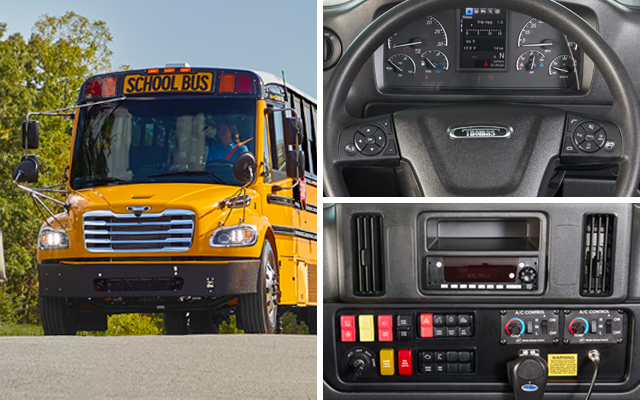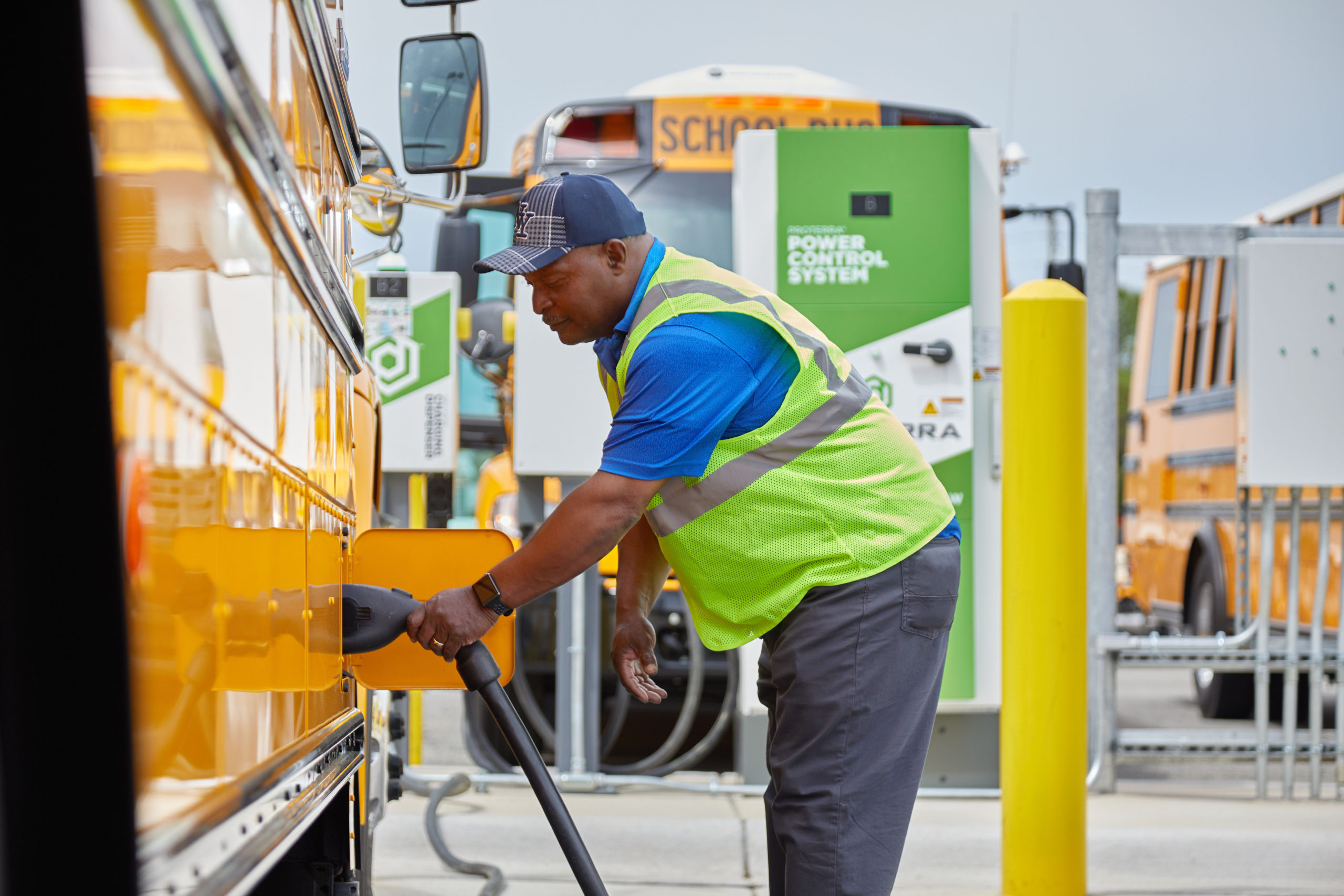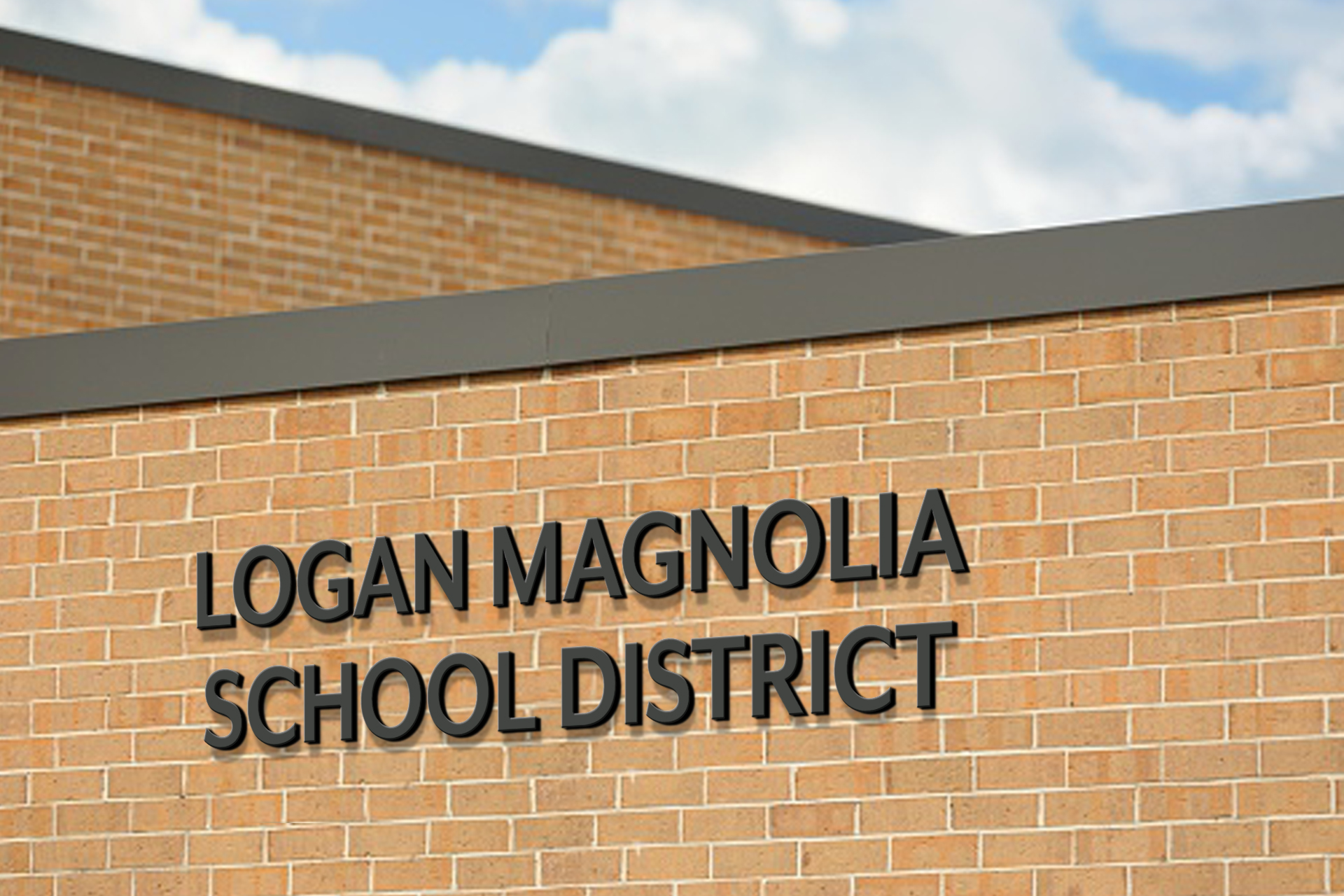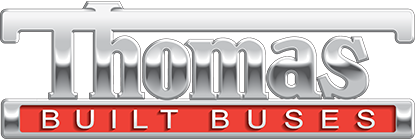
Upgrading the C2’s User-Experience for a New Era of Drivers
Student safety is in the hands of school bus drivers. The more comfortable and confident drivers feel, the more safely they drive.
For the last 20 years, Thomas Built Buses has supplied the industry with advanced electronics engineered with safety prioritized in every detail. Our Saf-T-Liner® C2 was designed…

As electric school buses continue to gain momentum across the U.S. through federal incentives like the EPA’s Clean School Bus Program, school districts are looking for help in transitioning their traditional bus fleets to electric, including building out electric vehicle (EV) infrastructure.
Building and implementing charging infrastructure can be a daunting task, with challenges…

From Kendra Eads, VP of Engineering and Technology at Thomas Built Buses
As we gear up for the back-to-school season, it’s important to recognize the significant advancements in school bus technology that enhance the safety and well-being of our students during their daily journeys.
At Thomas Built Buses, our commitment to safety is evident in our mission and…

(Em)Powering a Greener Future: Logan-Magnolia Community Schools' Journey with Electric School Bus Infrastructure Consulting
In today’s educational landscape, schools across the country are making strides towards embracing sustainable solutions.
A prime example of this is unfolding at Logan-Magnolia Community Schools in Iowa, under the leadership of Kurtis Hinkel, the grounds and transportation director.
Fueled by the vision of transitioning their fleet to electric, the school district recently…
Districts switching to alternative fuels are creating a lot of buzz. First there was a tremendous amount of attention to propane engines. And now the focus has shifted to compressed natural gas, especially since we officially have started production on our new Saf-T-Liner® C2 CNG school bus with the Cummins ISB6.7 G engine and Allison 2000 Series transmission (which, by the way, is the first in the industry). But does compressed natural gas deserve all of this attention, and is the switch really worth it?
We’re here to help. If compressed natural gas is new to your district, or if you are considering making the switch, here is a brief rundown of what you can expect: a compressed natural gas 101, if you will.
Why do it? What’s all the hype about?
Let’s start by saying that compressed natural gas isn’t right for every district. We realize that fuel of choice isn’t a one-size-fits-all model. For many districts, diesel fuel works just fine, while others would rather invest in propane. But if compressed natural gas is right for you, there are a number of benefits you can expect.
- Cost Savings on Fuel Yes, the capital cost of a compressed natural gas school bus is more than that of a clean-diesel bus but, with lower fuel costs, districts are recouping their capital costs in just a few years and end up saving thousands and thousands of dollars over the lifetime of the bus. And, since the cost of compressed natural gas is relatively stable over time, you can better budget annual fuel expenditures without any surprises.
- Decreased maintenance and maintenance costs Any newer bus will require less maintenance than a bus with 15-20 years on it. But, with compressed natural gas, you get the added benefit of a clean-burning engine, which results in less required maintenance and lower maintenance costs over time.
- A solid reputation Everyone knows that “going green” is great for the environment, which means that by switching to compressed natural gas, you’ll be seen as a steward of the environment and also as an innovator in your operations. Plus, because 98 percent of compressed natural gas is produced in the United States, you won’t have to rely on foreign oil.
- Happier Kids Anecdotally, many districts report that switching to compressed natural gas improves the behavior of the students on board. CNG school buses are quieter, which means students can talk quietly without competing with the roar of the bus. And for students who suffer from allergies or asthma, the clean air advantage of CNG is an added bonus to better breathing.
How Much Does it Cost?
Converting to compressed natural gas is an investment, but an investment that pays for itself and saves you money in the future. Overall, when calculating overall costs, you should consider:
- Capital costs for the bus itself As with any bus purchase, you can spec a compressed natural gas bus a number of ways, so costs vary dramatically. But keep in mind that government grants sometimes are available to offset some or all of your purchase price. And the tax breaks, less expensive fuel and total cost of ownership savings over time will compensate for the capital costs in a few short years.
- Infrastructure costs For compressed natural gas engines, your garage will need to install a CNG fueling station unless there are fueling stations nearby. CNG fueling stations come in two varieties: slow fill, which fill the bus tank overnight, and fast fill, which will fill the tank in about the same time as a traditional diesel tank.Some maintenance shops also will need to incorporate shop improvements. You will have to check with local agencies to see if any standards exist in your area. Most areas require a shop ventilation system, which is mounted in the roof.
- Maintenance and tools Thomas Built Buses offers training to all customers free of charge so the fleet manager, driver and maintenance team all are aware of the differences in operating and maintaining a compressed natural gas bus. There are a few maintenance issues to be aware of but, overall, maintaining a CNG school bus is not too different from maintaining a diesel engine.
Basically, you will need to replace spark plugs regularly and also inspect and replace your fuel and low pressure filters. CNG engines also require Low Ash Natural Gas oil.
Finally, technicians need to be familiar with the National Fire Protection Association (NFPA) Code 52. NFPA code 52 mandates that customers inspect their fuel cylinders at least once every two years for nicks and cuts, although annual inspection is recommended. An inspection by a certified inspector must take place every three years.
Is it worth it?
Absolutely! Most fleets recoup their initial capital cost in just a few years and reap the benefits of cost savings for many years to come, along with the benefits of streamlined maintenance and a cleaner-operating, quieter bus. Our customers continually comment on how they love their compressed natural gas buses and how easy they are to service and to drive, not to mention how quiet they are and how good their fuel economy has been.
If you are considering making the switch, start now. Contact your local dealer to discuss whether compressed natural gas is right for you. Thomas Built Buses currently offers three types of compressed natural gas buses: the Minotour® CNG, Saf-T-Liner® C2 CNG and the Saf-T-Liner® HDX CNG.
And if compressed natural gas isn’t right for you, consider our Minotour® Propane, Saf-T-Liner® C2 Propane or Saf-T-Liner® C2, Saf-T-Liner® HDX Propane, Saf-T-Liner® HDX or Minotour® in clean-diesel.
